Members
|
Jaime Hyman, MD is an Associate Professor of Anesthesiology, Division Chief of Ambulatory Anesthesiology, and director of the Head and Neck Anesthesiology Fellowship at the Yale School of Medicine. She serves as chair of the SHANA Education Board. Dr Hyman is also a Director on the Society for Ambulatory Anesthesia (SAMBA) Board and chairs the SAMBA Education Committee. She has presented nationally and internationally on topics related to ambulatory anesthesiology and head and neck anesthesiology. Her clinical interests include anesthesia for laryngology, endocrine surgery, head and neck cancer surgery, and difficult airway management. Her clinical research focuses on patient-centered outcomes after ambulatory surgery and ENT surgery. |
|
|
Dr. Atkins is a Diplomate of the American Board of Anesthesiology and a junior oral examiner for the national certifying boards in anesthesiology. He is Past-President and a member of the Board of Directors of the Pennsylvania Society of Anesthesiologists and voting member of the American Society of Anesthesiologists House of Delegates. |
|
|
Dr. Biro has a long-standing interest and experience in head and neck anesthesia and advanced airway management. He has worked towards establishing modern standards in ENT anesthesia since 1990s, when he popularized the use of high frequency jet ventilation (HFJV) for upper airway surgery, and suggested some novel didactic and technical approaches to the difficult airway. Dr. Biro was a founding member of the European Society for Jet Ventilation (2000), and its inaugural president. He currently serves his second term as the Treasurer of the European Airway Management Society (EAMS). Dr. Biro has written over 40 peer-reviewed articles, has authored 2 books and multiple book chapters, and has lectured extensively throughout the world. His current research interests include pharmacokinetics and cost of general anesthetics, and advanced airway management. Dr. Biro is the developer of the SensaScope, a semi-rigid video intubation stylet with a steerable tip. |
|
|
|
|
|
Originally from Milan, Italy, Dr. Cavallone graduated from the Medical School of the “Universita’degli Studi di Milano” in 1993. She completed her anesthesiology residency at the same medical school in 1997, and continued to work as a consultant in Anesthesiology and Intensive Care in Milan until 2004, when she was offered a faculty position at the Department of Anesthesiology at Washington University in St. Louis. Dr. Cavallone’s major clinical, educational and research activities are currently directed at patient safety, specifically in the fields of airway management and anesthesia for head and neck surgery. As a leader of the clinical head and neck anesthesia services at Wash.U., Dr. Cavallone has systematically investigated safe extubation practices, and developed an innovative extubation algorithm for major neck and upper airway surgery. Dr. Cavallone is also responsible for devising and coordinating a unique, multifaceted anesthesia teaching curriculum for both, the head and neck anesthesia residents, and the ENT surgical residents. Dr. Cavallone has authored several chapters on ENT anesthesia and airway management topics in major textbooks and organized numerous workshops on airway management for residents and medical students. |
|
|
Like many, Dr. Cloyd developed an interest in head and neck anesthesiology and airway management during his residency training, and has been fortunate to count many members of the SHANA community as teachers and mentors. Clinically, Dr. Cloyd has a special interest in free tissue transfer anesthetic management and difficult airway documentation and its follow-up airway management. Dr. Cloyd was the first recipient of the FAER-ABA Research in Education Grant, working with a team to evaluate the association between board certification and anesthesia clinical outcomes. He also has an interest in global health and anesthesia, earning a Master’s of International Public Health at the University of Sydney in 2012, and has previously worked to develop sustainable global health and anesthesia programs. Fortunate to be the recipient of one of the 2017 ASA Resident International Scholarships, Dr. Cloyd was able to spend time and work with anesthesiologists in Mbale, Uganda, learning from the clinical faculty at CURE Uganda and Busitema University. Outside of work, Dr. Cloyd enjoys spending time with his family and dogs. |
|
|
Dr. Damrose attended the UCLA School of Medicine, earning his M.D. degree in 1995 and completing a thesis in the field of head and neck surgery. He remained at UCLA for training in general surgery from 1995 to 1997, and completed his UCLA otolaryngology/head and neck residency in 2001. After serving as clinical instructor in surgery and completing a two-year clinical and research fellowship in laryngeal surgery at UCLA under Gerald S. Berke, M.D. Dr. Damrose joined the Stanford faculty in 2003. Dr. Damrose’s clinical interests include conservation laryngectomy, voice rehabilitation of the total laryngectomy patient, endoscopic therapy for head and neck cancer, and Transoral Robotic Surgery (TORS). Dr. Damrose is a diplomate of the American Board of Otolaryngology/Head and Neck Surgery. He is a member of the American Academy of Otolaryngology/Head and Neck Surgery, the American College of Surgeons, the American Head and Neck Society, and The Triological Society. Dr. Damrose currently serves as medical director of the International Association of Laryngectomies, medical advisor to the Foundation for Voice Restoration, and program director for the American Bronchoesophagological Assocation. |
|
|
Dr. DuCanto has enthusiastically participated as faculty at the Society for Airway Management (SAM) annual meetings in 2010 and 2011, and has collaborated with multiple SAM physicians to develop new techniques for airway management and surgical airway access. Some of the examples of this work include a technique of rapid cricothyrotomy using an optical stylet endoscope to deliver the airway catheter (in collaboration with Dr. Seth Manoach from SUNY Downstate), and the technique of optical stylet-guided tracheal intubation through various supraglottic airways. Dr. DuCanto is actively engaged in clinical teaching, and has coordinated and supervised the anesthesiology rotation for resident physicians and medical students at Aurora St. Luke's Medical Center since 2004. |
|
|
Dr. Healy is the Director of Head and Neck Anesthesia at the University of Michigan in Ann Arbor, where he has been a faculty member since 2005. Raised and educated in Cambridge, England, he completed his medical school training at St Bartholomew’s and The Royal London Hospital in 1996. He completed both Internal Medicine and Anesthesiology boards in the UK, becoming both a Member of The Royal College of Physicians (MRCP) and Fellow of the Royal College of Anesthetists (FRCA). His interests include novel airway device development and performance assessment and clinical outcomes research. Dr. Healy has lectured, published book chapters and original articles on airway management and devices. He is the course director of the Annual Interdisciplinary Airway Management Course of the University of Michigan. He is an advisory board member of M-HEAL (Michigan Health Engineered for All Lives), a biomedical engineering group that applies novel engineering solutions to the health problems of the developing world. |
|
|
Dr. Jagannathan’s clinical research is focused on airway research in children. He has designed and conducted many randomized trials on the use of advanced airway devices and techniques for pediatrics, observational airway studies, and has authored 85 publications. Sim has lectured nationally and internationally on the topics of airway management in children, specifically the use of advanced airway techniques for the difficult airway. Currently, Dr. Jagannathan gives the Refresher Course lecture on difficult airway management in children and runs the pediatric airway workshop for the American Society of Anesthesiologists (ASA) annual meeting. He also serves on the Board of Directors for Society for Airway Management (SAM). Dr. Jagannathan is an Editor of American Board of Anesthesiologists written exam and an Oral Board Examiner for the American Board of Anesthesiologists. He reviews extensively for Pediatric Anesthesia, Anesthesia & Analgesia, British Journal of Anaesthesia, BMC Pediatrics, European Journal of Pediatrics, Journal of Clinical Anesthesia, Journal of Anesthesia (Editorial Board Member), and BMC Anesthesiology, completing over 50 manuscript reviews a year. |
|
|
Dr. Levine is an expert in the anesthetic management for otolaryngologic surgery, and is senior editor and major contributing author of the reference textbook “Anesthesiology and Otolaryngology”, an innovative collaborative work, which was published by Springer in 2013. Over the course of his 20-year tenure Dr. Levine has developed an innovative clinical program incorporating the extensive use of regional anesthesia for head and neck surgical procedures for intraoperative and postoperative care, and for airway management. Some of Dr. Levine’s research focuses on the use of regional anesthesia for sinus, nasal and thyroid surgery. A prolific speaker, Dr. Levine lectures nationally on TIVA and regional anesthesia for head and neck surgery. He co-moderated (with his colleague Dr. Samuel DeMaria) the first Workshops on Regional Anesthesia for Head and Neck Surgery at both the ASA 2013 and the NYSSA PGA 2013. Recognized as an expert in simulation, Dr. Levine developed innovative programs of simulation-based education and assessment. His team’s CARE (Clinical Anesthesia ReEntry) program is perhaps the most notably known for simulation-based assessment and retraining for anesthesiologists seeking clinical reentry. Dr. Levine is an editor on the ASA Editorial Board on Simulation Education that oversees the ASA simulation endorsement program, and is also a site visitor for the Society in Simulation Healthcare accreditation program. As one of the first programs to be awarded endorsement, Dr. Levine has been the program director of the ASA endorsed HELPS (Human Emulation, Education, and Evaluation Lab for Patient Safety and Professional Study) Center Program, and has been conducting courses to satisfy MOCA ® Part IV requirements for ABA re-certification since 2010. In 2013 Dr. Levine served as the senior editor of “The Comprehensive Textbook of Healthcare Simulation”, a 50 chapter, multidisciplinary, international work published by Springer. As a testament to his teaching abilities, Dr. Levine has been the recipient of numerous departmental, institutional, and international education awards; most notably he was the 2009 recipient of the International Anesthesia Research Society Life Time Achievement Award for Teaching. |
|
|
Dr. Mir’s main areas of work focus on anesthesia for airway surgery and major trauma. She has an interest in developing the use of jet ventilation techniques for airway surgery, and has also introduced the use of high flow oxygen for difficult airway management in her Trust. Her interest in medical education and human errors in teaching and training have formed a major part of the airway courses she has set up. Dr. Mir is currently the airway research lead at St. Georges Hospital, where she is actively involved in setting up several research projects. She has successfully introduced an Airway fellowship at St. Georges Hospital, now running successfully in its second year. Dr. Mir has actively contributed in establishing and running a number of airway courses, simulation, lectures and workshops. She is a regular faculty at regional as well as national airway courses and has lectured nationally as well as internationally on airway related topics of interest. Dr. Mir has been a foundation member and honorary secretary for the Head and Neck Anaesthetist group (HANA), U.K. since 2012. She currently serves as Co-Chair for the South Thames Airway Group (STAG), and as a board member for the EAMS (European Society of Airway Management) Education subcommittee. Dr. Mir has also recently taken over the lead for the Airway Train the Trainers for airway management course at the Royal College of Anaesthetists, U.K. |
|
|
She completed both her anesthesiology residency at Stanford in 2016 and fellowship in Head & Neck Anesthesia and Advanced Airway Management, also at Stanford, in 2017. Dr. Mittal currently serves as Associate Director for resident education for the Head & Neck Anesthesia rotation for the Stanford anesthesiology residency. She also teaches at the annual Stanford Advanced Airway and Fiberoptic Course. Her academic interests include resident education, advanced oxygenation techniques, enhanced recovery after surgery (ERAS), anesthesia for adult patients with epidermolysis bullosa, sustainability in anesthesia, and quality improvement. She also serves as a faculty facilitator for the Peer Support and Resilience in Medicine (PRIME) program. |
|
|
Dr. Patel’s airway interests include jet ventilation, emergency airway management, airway stenosis, phonosurgery, video laryngoscopy, and the role of the flexible laryngeal mask airway in head and neck anesthesia and difficult airway management. Over the last thirteen years as a consultant, Dr. Patel has anesthetized over 4,000 patients for laryngeal and tracheal procedures. Dr. Patel has presented or published over 90 anesthesia articles and 11 book chapters, and has also helped to develop a new video laryngoscope, the Venner A.P. Advance Video Laryngoscope. Dr. Patel has been invited to lecture on various head and neck anesthesia and airway related topics in more than twenty-one countries around the world. |
|
|
Dr. Ramamurthi provides pediatric anesthesia for a wide range of surgical procedures, including head and neck pediatric anesthesia. He has been actively involved in pediatric airway workshops at Stanford since 2009 and has conducted pediatric airway workshops in Brazil and South Africa. Over the years, he has given pediatric airway lectures to anesthesiology residents, fellows, emergency medicine physicians, dental practitioners, air medical transport personnel, nurses and medical students. Pediatric lung isolation is also a topic of his clinical interest and expertise, and Dr. Ramamurthi has given lectures on this subject at national and regional meetings. |
|
|
A Bay Area native, Dr. Saxena was born in Mountain View, CA and received his undergraduate degree from the University of California, Berkeley. He received his medical degree from the University of California, San Francisco and then moved south to complete his anesthesia residency at Stanford. During residency he was always attracted to advanced airway management techniques and focused on this area during his last year of training. After completing residency, he was excited to stay on at Stanford as an attending and joined the Head and Neck Anesthesia and Advanced Airway Management team. Dr. Saxena enjoys working with his ENT surgical and anesthesia colleagues, teaching residents in the operating room as part of the highly-rated Head and Neck Anesthesia / Advanced Airway Management rotation, and also teaching at the annual Stanford Advanced Airway Management and Fibroptic Course. Dr. Saxena’s current research interests include the use of Transnasal Humidified Rapid Insufflation Ventilatory Exchange (THRIVE) for operative laryngoscopy. Outside of work, Dr. Saxena enjoys traveling, hiking, and seeing his Bay Area sports teams in action with his wife and friends. |
|
|
Sam developed great interest in head and neck anesthesia and advanced airway management during his residency experience. Throughout his fellowship and time as faculty, he has taken interest in airway risk assessment and intraoperative airway management for patients with complex head and neck pathologies including head and neck cancer, subglottic stenosis, laryngeal disease, cervical spine disease, and laryngotracheal trauma. Dr. Schechtman spends significant time teaching advanced airway management skills and airway risk assessment approaches to other providers, faculty, fellows, residents, and medical students in training at the University of Michigan. His current research interests include perioperative predictors of head and neck free flap failure as well as predictors of challenging airway management using video laryngoscopy, and airway management for patients with a prior history of a "challenging airway." Additionally, Sam focuses investigation on perioperative approaches to management of complex head and neck pathologies, institutional airway management safety, and management of the cannot intubate and cannot oxygenate scenario. Dr. Schechtman has helped to lead institutional and international airway workshops. |
|
|
Dr. Varvinskiy has strong interest in education and difficult airway management. He is a current Examiner at the Royal College of Anaesthetists and Eutropean Society of Anaesthesia (ESA), and served as a College Tutor at the Anesthetic Department at his hospital. He is a co-founding member of the Torbay Difficult Airway Course and SWEAT (South West Emergency Airway Training) Course, and has been involved in teaching at numerous Airway Workshops at the Royal College of Anaesthetists and AAGBI (Association of Anaesthetists of Great Britain and Ireland). He runs regular in-house “Drop-in sessions” for all levels of staff at Torbay Hospital. Dr. Varvinskiy’s clinical interests include emergency airway management, nasendoscopy assessment, patient positioning and fixation of flexible laryngeal mask in head and neck surgery, and flexible fiberoptic intubation. He has published 20 anesthesia articles and 2 book chapters, and presented on airway topics at various meetings. He is a current Chairman of SWAMS (South West Airway Management Society) and past Chairman of DAS 2016 Meeting (Torquay). |

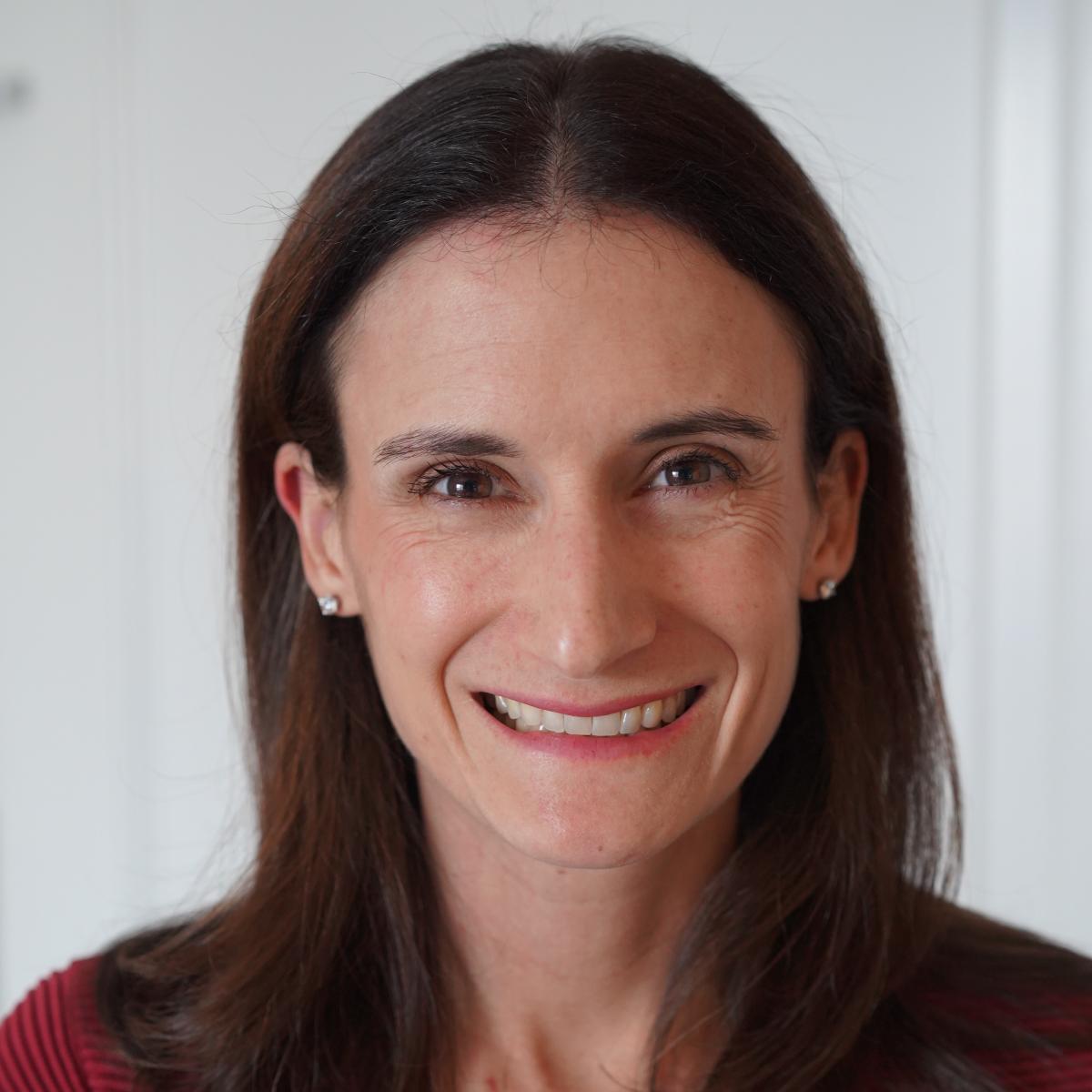
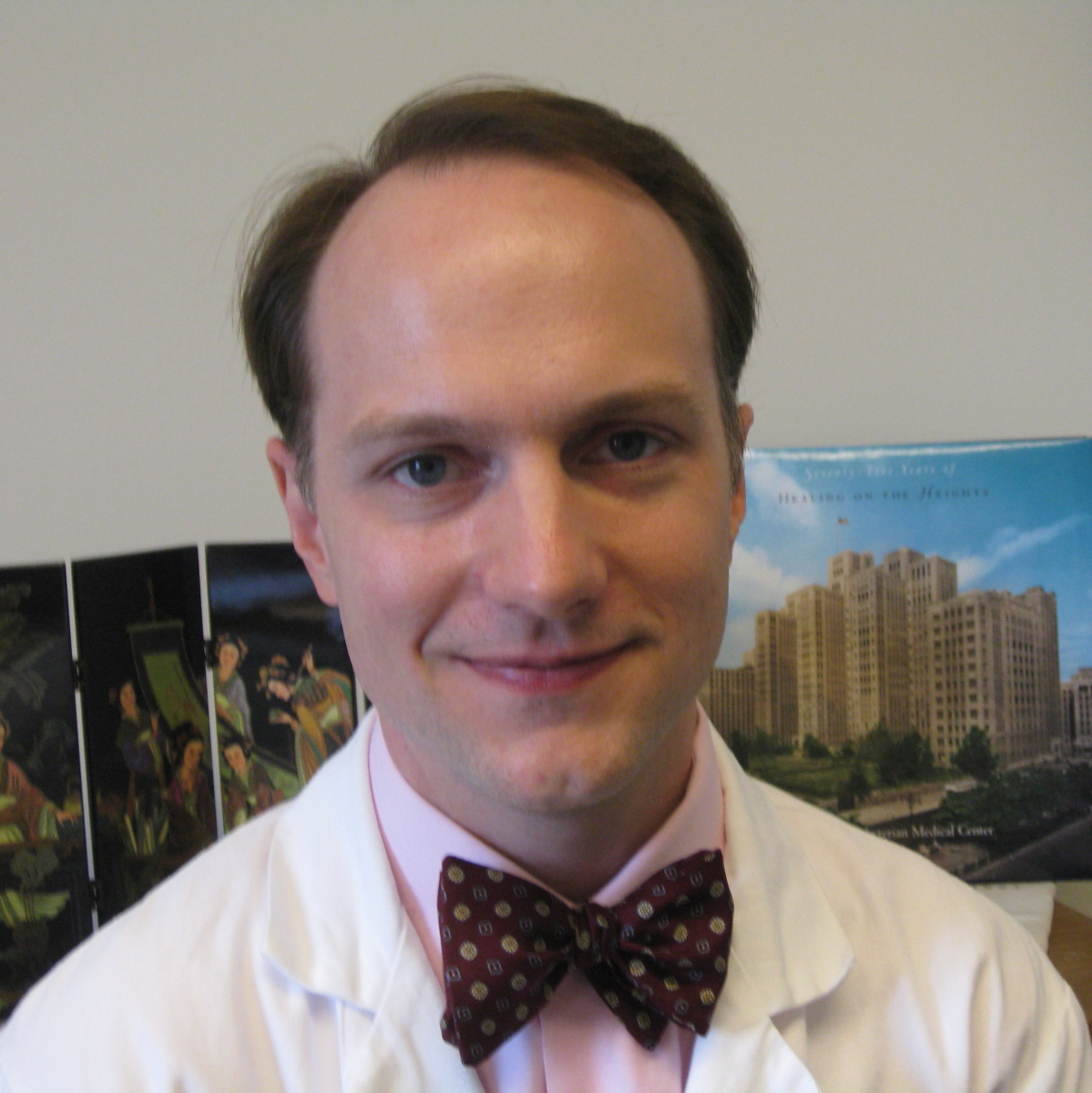
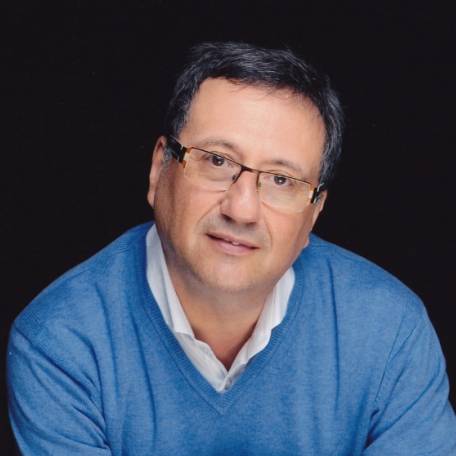
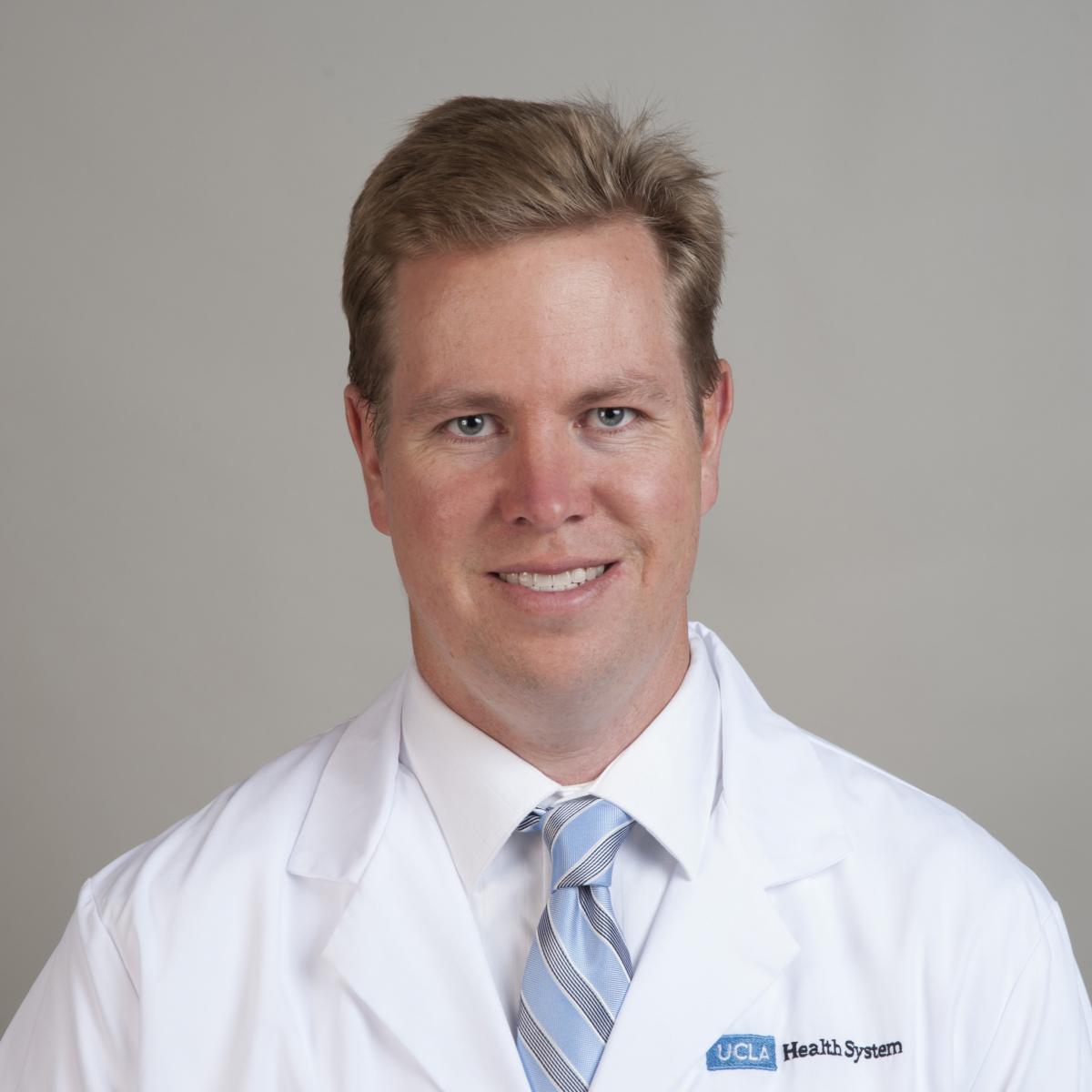 Jack Buckley, M.D., is an Associate Clinical Professor at UCLA Medical Center and is the Program Director for the Residency Program. He is the Director of Anesthesia Head and Neck team and Chairs the ASA Program Directors Advisory Group. He is an American Board of Anesthesia (ABA) Oral examiner and leads one of the groups that is responsible for writing the Objective Structured Clinical Exam (OSCE) for the ABA.
Jack Buckley, M.D., is an Associate Clinical Professor at UCLA Medical Center and is the Program Director for the Residency Program. He is the Director of Anesthesia Head and Neck team and Chairs the ASA Program Directors Advisory Group. He is an American Board of Anesthesia (ABA) Oral examiner and leads one of the groups that is responsible for writing the Objective Structured Clinical Exam (OSCE) for the ABA.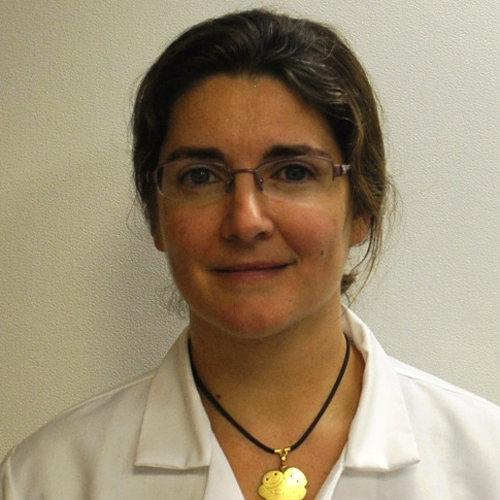
 Ben Cloyd, M.D., M.I.P.H., is a head and neck anesthesiologist in the Department of Anesthesiology at the University of Michigan. A graduate of the University of Michigan residency program, he completed a fellowship in Head and Neck anesthesiology along with a Community of Medical Educators in Training (COMET) Mini-Fellowship at the University of Michigan in 2019 and subsequently joined the clinical faculty.
Ben Cloyd, M.D., M.I.P.H., is a head and neck anesthesiologist in the Department of Anesthesiology at the University of Michigan. A graduate of the University of Michigan residency program, he completed a fellowship in Head and Neck anesthesiology along with a Community of Medical Educators in Training (COMET) Mini-Fellowship at the University of Michigan in 2019 and subsequently joined the clinical faculty.

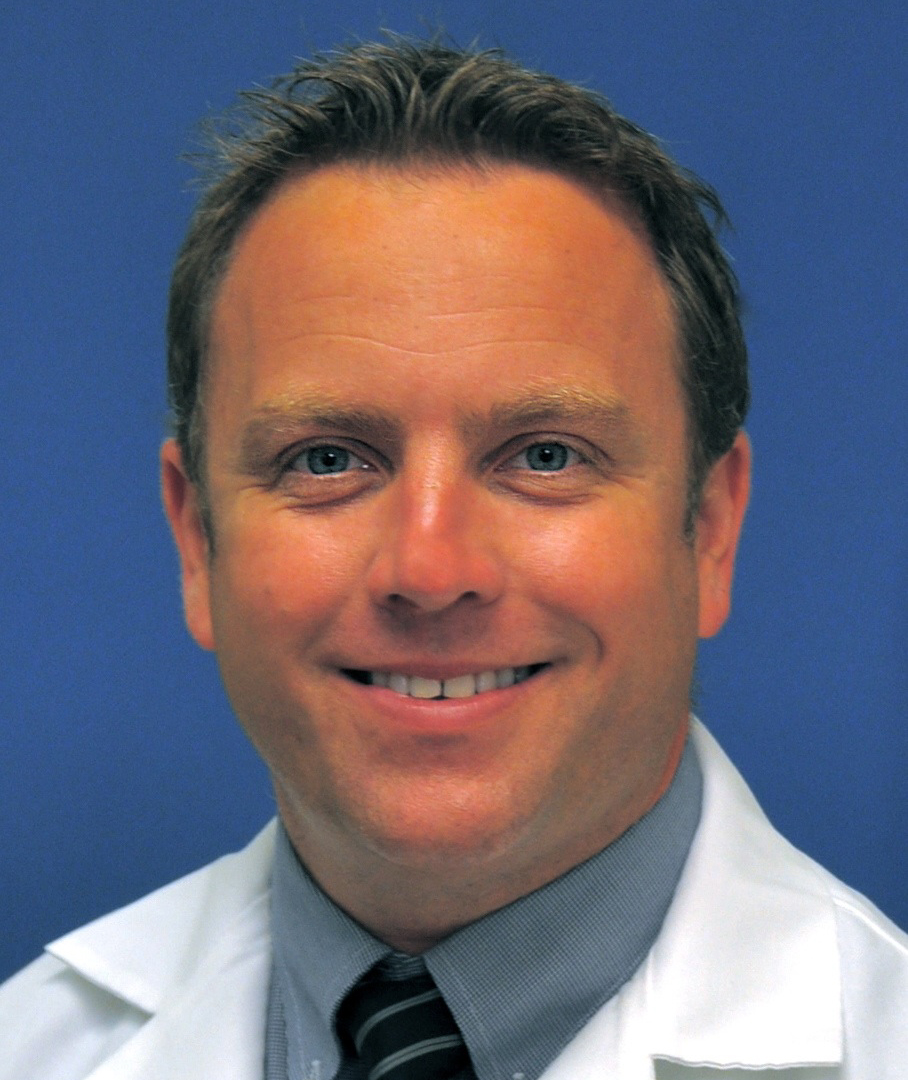 David Healy, M.D., Past President, is is an anesthesiologist committed to the improvement of medical care received by patients undergoing Head and Neck Surgeries. He wants to link anesthesiologists to encourage communication, education and coordinated scientific endeavor.
David Healy, M.D., Past President, is is an anesthesiologist committed to the improvement of medical care received by patients undergoing Head and Neck Surgeries. He wants to link anesthesiologists to encourage communication, education and coordinated scientific endeavor.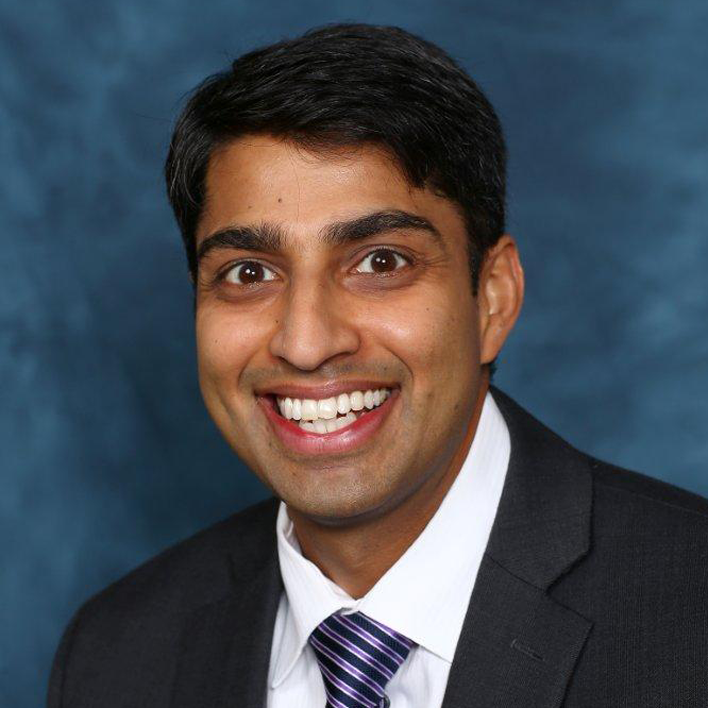 Narasimhan (“Sim”) Jagannathan, M.D., practices pediatric anesthesia at the Ann & Robert H. Lurie Children’s Hospital of Chicago. It is tertiary care children’s hospital, which conducts 25,000 anesthetics for children a year. Sim is also the Associate Chair for Academic Affairs and an Associate Professor Anesthesiology at Northwestern University. Dr. Jagannathan completed anesthesiology residency at the Cleveland Clinic in 2005 and subsequently did his pediatric anesthesia fellowship at Children’s Memorial Hospital (now Ann & Robert H Lurie Children’s Hospital of Chicago).
Narasimhan (“Sim”) Jagannathan, M.D., practices pediatric anesthesia at the Ann & Robert H. Lurie Children’s Hospital of Chicago. It is tertiary care children’s hospital, which conducts 25,000 anesthetics for children a year. Sim is also the Associate Chair for Academic Affairs and an Associate Professor Anesthesiology at Northwestern University. Dr. Jagannathan completed anesthesiology residency at the Cleveland Clinic in 2005 and subsequently did his pediatric anesthesia fellowship at Children’s Memorial Hospital (now Ann & Robert H Lurie Children’s Hospital of Chicago).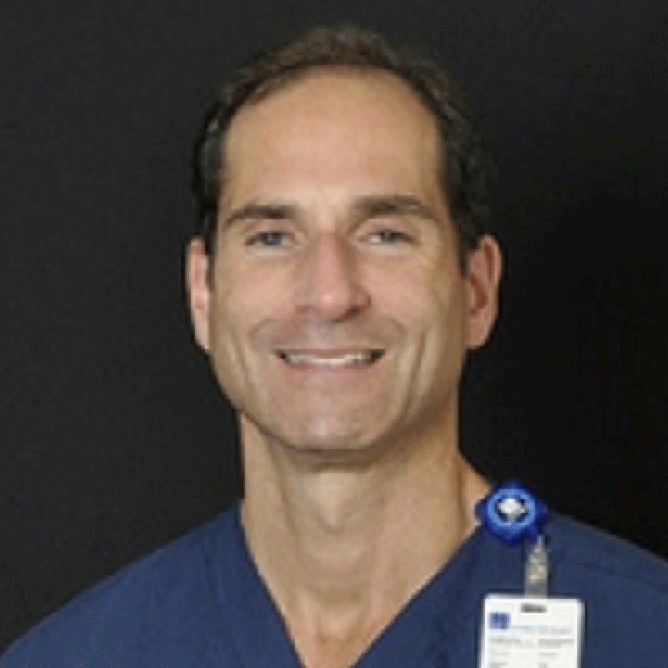
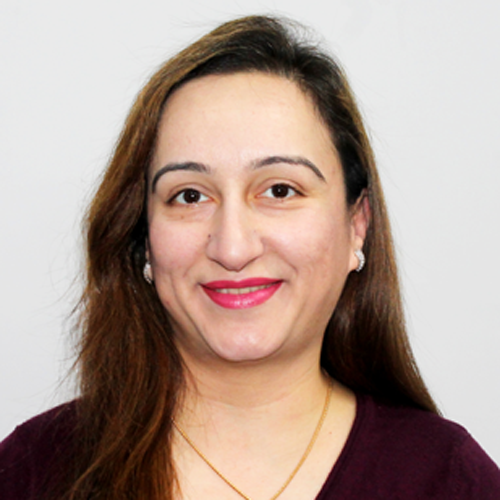 Fauzia Mir, FRCA, EDICM, PG Cert Med Ed, is a consultant anaesthetist with a special interest in head and neck anesthesia and difficult airway at St. Georges Hospital, London, U.K. She completed her training in Anesthesia and Intensive Care at St. Bartholomew’s Hospital (Barts) and the London NHS Trust, and has worked at a number of leading U.K. airway specialist centers, such as Barts, Royal National Throat, Nose and Ear Hospital, Kings College Hospital and Charing Cross Hospital.
Fauzia Mir, FRCA, EDICM, PG Cert Med Ed, is a consultant anaesthetist with a special interest in head and neck anesthesia and difficult airway at St. Georges Hospital, London, U.K. She completed her training in Anesthesia and Intensive Care at St. Bartholomew’s Hospital (Barts) and the London NHS Trust, and has worked at a number of leading U.K. airway specialist centers, such as Barts, Royal National Throat, Nose and Ear Hospital, Kings College Hospital and Charing Cross Hospital. Brita M. Mittal, M. D., is a Clinical Assistant Professor in the Department of Anesthesiology, Perioperative, and Pain Medicine at Stanford University School of Medicine. Born and raised in Fremont, California, Dr. Mittal received a Bachelor of Science in Materials Science & Engineering from Massachusetts Institute of Technology prior to obtaining her medical degree from the University of California, Los Angeles.
Brita M. Mittal, M. D., is a Clinical Assistant Professor in the Department of Anesthesiology, Perioperative, and Pain Medicine at Stanford University School of Medicine. Born and raised in Fremont, California, Dr. Mittal received a Bachelor of Science in Materials Science & Engineering from Massachusetts Institute of Technology prior to obtaining her medical degree from the University of California, Los Angeles.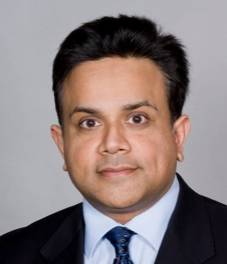
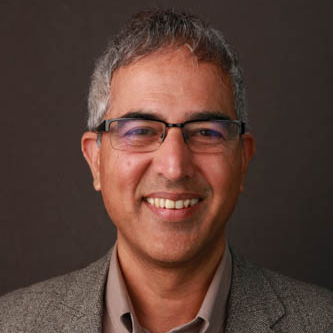 Radhamangalam J Ramamurthi, M.D., is Clinical Associate Professor of Anesthesiology at Stanford University. He completed his anesthesia and pediatric anesthesia training in India and U.K. After a two‐year appointment at the University of Michigan as a Visiting Instructor of Anesthesia, Dr. Ramamurthi joined clinical faculty at Stanford University in 2004. Dr. Ramamurthi has held the administrative positions of Clinical Director of Pediatric Anesthesia and Director of Pediatric Anesthesia Resource Center at Stanford Children’s Hospital. Currently, he co-chairs the Stanford University Pediatric Regional Anesthesia Service. He is involved with several research projects and has authored several papers and book chapters.
Radhamangalam J Ramamurthi, M.D., is Clinical Associate Professor of Anesthesiology at Stanford University. He completed his anesthesia and pediatric anesthesia training in India and U.K. After a two‐year appointment at the University of Michigan as a Visiting Instructor of Anesthesia, Dr. Ramamurthi joined clinical faculty at Stanford University in 2004. Dr. Ramamurthi has held the administrative positions of Clinical Director of Pediatric Anesthesia and Director of Pediatric Anesthesia Resource Center at Stanford Children’s Hospital. Currently, he co-chairs the Stanford University Pediatric Regional Anesthesia Service. He is involved with several research projects and has authored several papers and book chapters.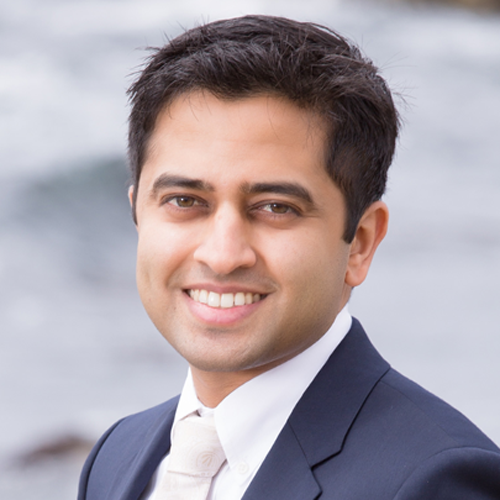 Amit Saxena, M.D., is a Clinical Instructor of Anesthesiology at the Department of Anesthesiology, Perioperative and Pain Medicine, Stanford University School of Medicine.
Amit Saxena, M.D., is a Clinical Instructor of Anesthesiology at the Department of Anesthesiology, Perioperative and Pain Medicine, Stanford University School of Medicine.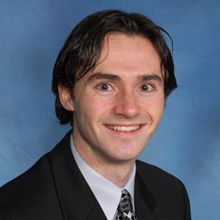
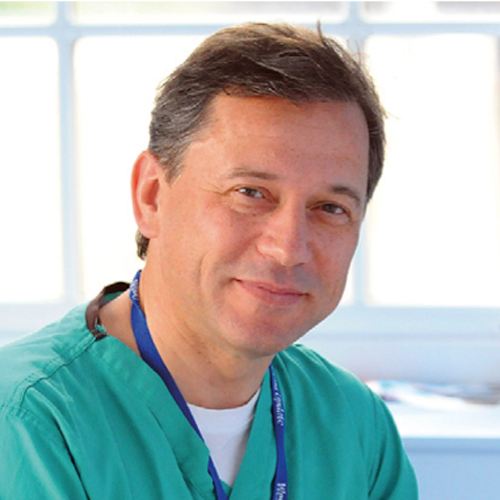 Andrey Varvinskiy, M.D., DA, DEAA, FRCA graduated from Arkhangelsk State Medical Institute in 1986 and trained in surgery and anesthesia at University Hospital of Arkhangelsk (City Hospital N1). After completing his training, he continued to work at University Hospital of Arkhangelsk as an Attending Specialist and Lecturer in Anesthesia and Intensive Care till 1995, before moving to the U.K. While in the U.K., he underwent 6 year anesthetic training program in anesthesia and intensive care in Bristol and Cardiff Schools of Anesthesia. In 2001 he was appointed as a Consultant Anaesthetist at Torbay Hospital, Torquay, Devon.
Andrey Varvinskiy, M.D., DA, DEAA, FRCA graduated from Arkhangelsk State Medical Institute in 1986 and trained in surgery and anesthesia at University Hospital of Arkhangelsk (City Hospital N1). After completing his training, he continued to work at University Hospital of Arkhangelsk as an Attending Specialist and Lecturer in Anesthesia and Intensive Care till 1995, before moving to the U.K. While in the U.K., he underwent 6 year anesthetic training program in anesthesia and intensive care in Bristol and Cardiff Schools of Anesthesia. In 2001 he was appointed as a Consultant Anaesthetist at Torbay Hospital, Torquay, Devon.

